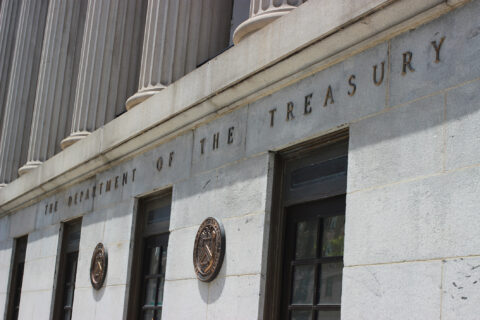The new ARPA Coronavirus Capital Projects Fund is a $10 billion fund for states to use on broadband, digital connectivity devices, and multi-purpose community facilities that directly enable work, education and health monitoring.
On Monday, September 20, the U.S. Department of Treasury released guidance for the American Rescue Plan Act’s Coronavirus Capital Projects Fund. The Capital Projects Fund is a flexible $10 billion fund to states and territories for investment in “Capital Projects designed to directly enable work, education, and health monitoring.” While this fund will be controlled by states, state governments will have the ability to target covered projects to specific communities in need and may opt to subgrant funding to local governments.

The guidance strongly encourages, but does not require, states to prioritize spending on broadband and connectivity, specifically investment in “high-quality broadband infrastructure as well as other connectivity infrastructure, devices, and equipment.” Included in the presumptively eligible projects under this fund are broadband infrastructure projects and digital connectivity technology projects (purchase and/or installation of devices and equipment for broadband access, such as computers). However, states may also choose to invest in multi-purpose community facility projects for capital assets that meet the requirement of enabling work, education, and health monitoring, such as construction or improvement of community schools, libraries, and community health centers.
Eligible broadband projects must provide service upon completion that meets or exceeds 100 Mbps symmetrical service. States are encouraged, but not required, to prioritize last-mile service, investment in fiber-optic infrastructure, and to prioritize broadband infrastructure owned, operated, or affiliated with local governments, nonprofits, and cooperatives. Eligible projects are also required to participate in federal low-income subsidy programs upon completion and are encouraged to provide at least one low-cost option for service. States are encouraged, but not required, to prioritize communities currently lacking reliable 100/20 Mbps wireline service.
States are not permitted to use the fund for highways, bridges, transit systems, and ports, and construction or improvement of hospitals and traditional schools is not presumed to be eligible except under limited circumstances. States may also be able to make, under certain circumstances, investments in projects not presumed eligible and subject to a case-by-case review, so long as they can demonstrate:
- that the project is designed to jointly and directly enable work, education, and health monitoring for at least five years from completion of the project;
- that the project addresses a critical need that results from or was made apparent or exacerbated by the COVID-19 health emergency; and
- that the project is designed to address a critical need in the community to be served by it.
Projects must be “substantially complete” and funds must be expended by December 31, 2026. While the fund is allocated by formula and not competitive, states must submit an application and receive approval from Treasury to access funds. States will be required to submit an overall spending plan and at least one plan for a specific project to access initial funding, and each individual project must be approved by Treasury. States must also submit quarterly expenditure reports and annual performance reports.
Communities with capital and connectivity needs that may benefit from this program should begin a conversation with their state broadband offices as soon as possible to determine how best to engage with the planning process. For more information on your state’s broadband program, visit the National Telecommunication and Information Administration’s State Broadband Leaders Network directory.









